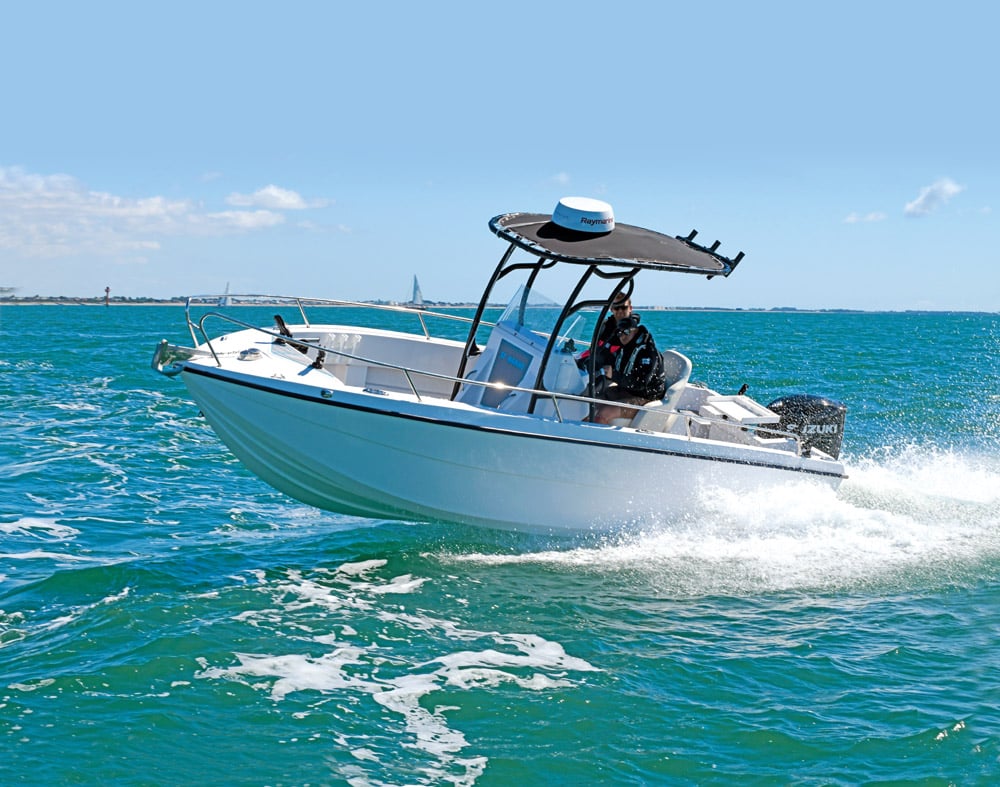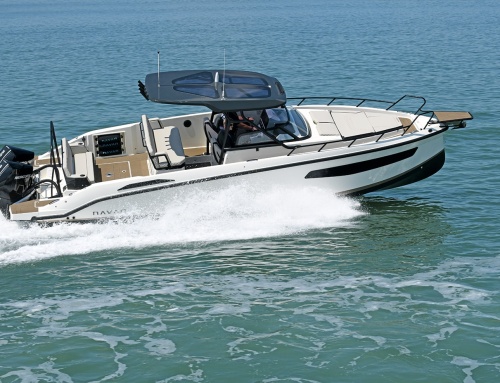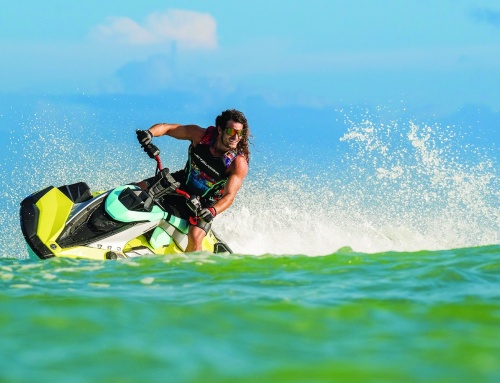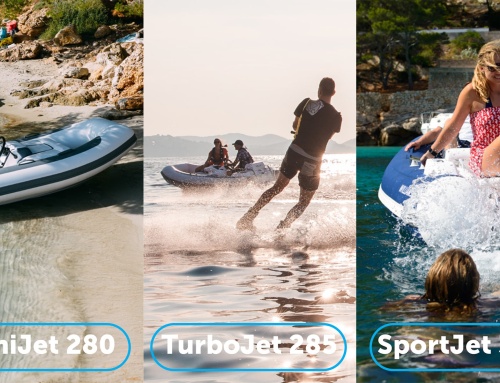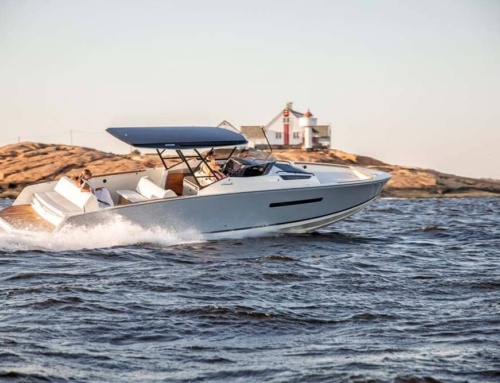Fast, frugal and hewn from granite, the Hurricane 21 fishing boat has big-boat aspirations, as Greg Copp discovers …
Hydrodynamics is the most important factor in the design of any hull. The laws of physics relating to it never change, so it is not really surprising that hull designs by and large have barely changed in half a century. When laying up a new hull today, much of the trial and error has been replaced by computer-assisted design (CAD), but many older, proven designs in varying forms are still gracing the drawing boards.
The Hurricane 21 from Solent-based SF Marine is one of these. Its original hull shape hit the water in 1976 in the form of the Relcraft Pearl 21. It was the brainchild of John Moxham, a man who would subsequently design a wide range of commercial, pleasure and fast military craft. Now reborn in the form of a fast fishing boat, the Hurricane 21 is again a Moxham boat, with John being on the SF Marine design team. The hull is deep vee with a sharp transom deadrise angle of 24 degrees, and it uses what can be termed a ‘reverse chine design’ with a rounded keel. In simple terms, the chines are downturned rather than horizontal, with the effect of channelling most of the water beneath the hull, rather than travelling topside as spray. Apart from keeping the crew dry, this concept is claimed to provide more hydrodynamic lift, with an increase in efficiency and a softer ride. The rounded keel, which widens in profile towards the stern, is also said to provide more lift.
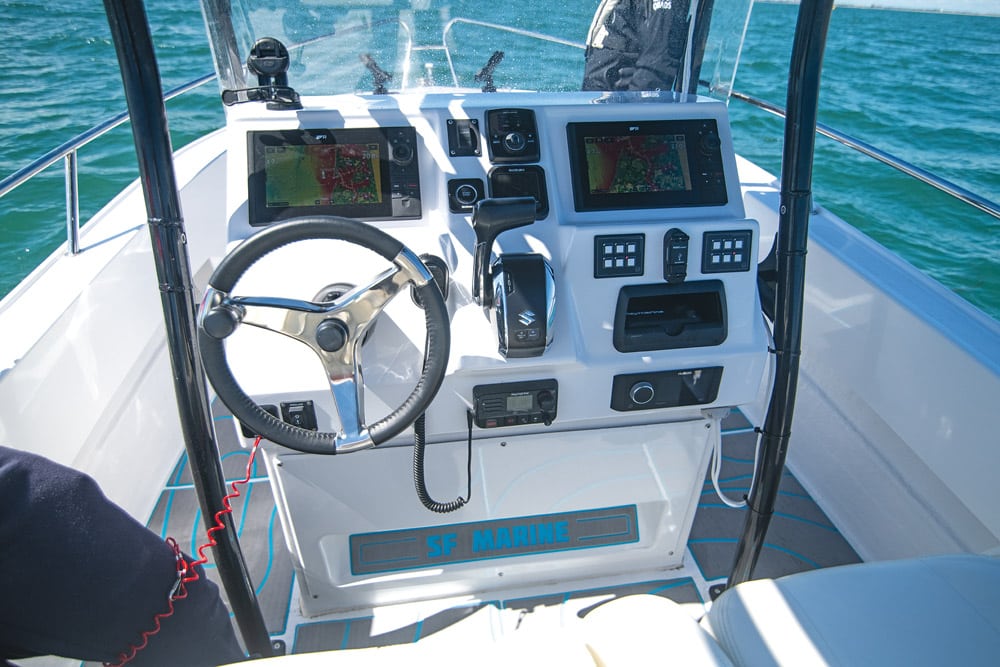
A comprehensively equipped console.
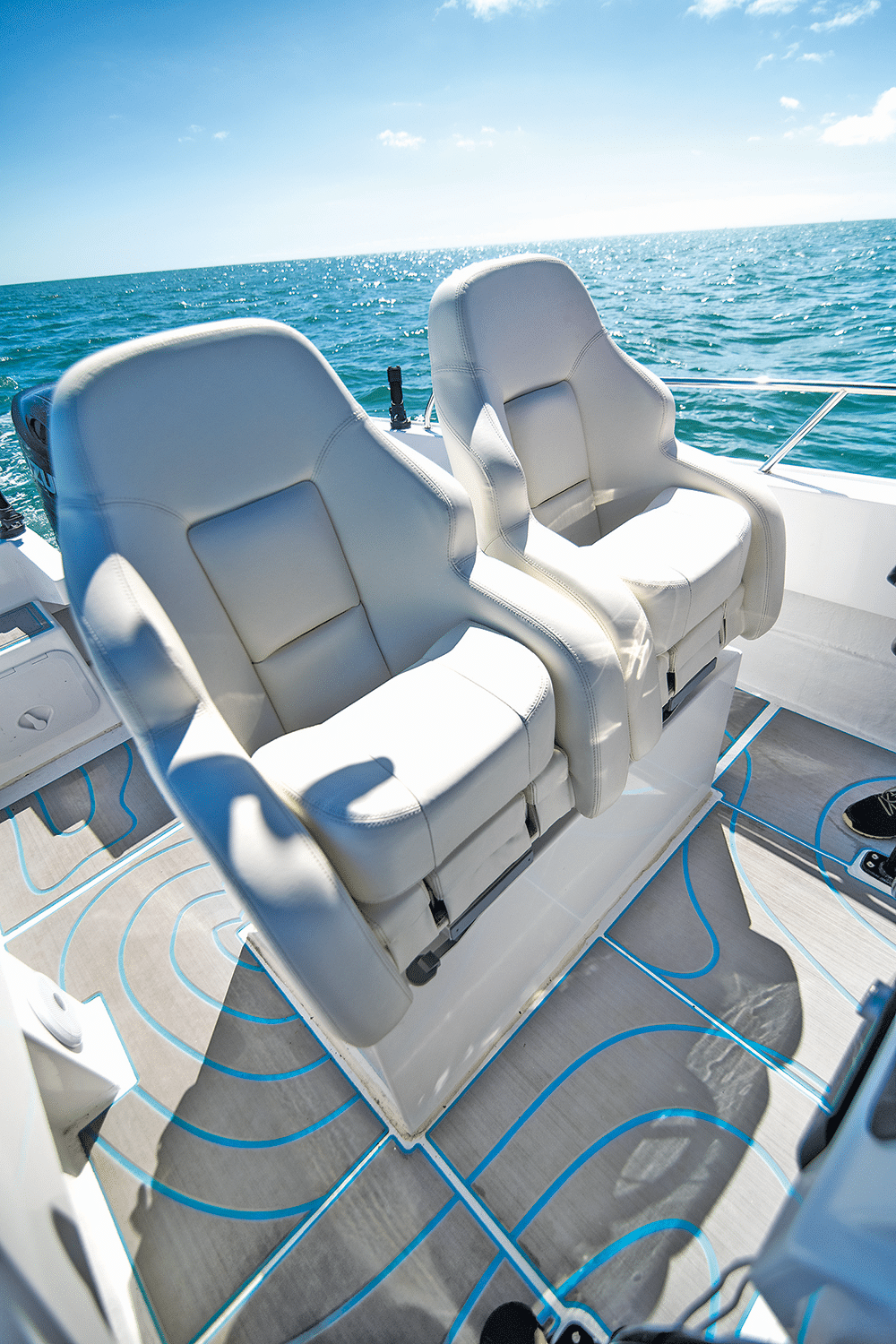
The helm seats provide a good degree of comfort.

On-board refreshment is stored in a YETI cool box under the helm seats.
There have been other hull designs aimed at creating much the same effect, namely the Swedish Petestep and Cobra Ribs’ current Evolution hull. The Petestep hull uses a different method in the form of V-shaped steps that are raked aft from a point on the keel line at the forefoot. The Cobra, on the other hand, has a twin-chine set-up. The lower chine produces a similar effect to the Hurricane as it channels water aft beneath the boat – improving, we are told, both performance and ride. This chine is downturned slightly towards its edge, which has the effect of tucking the water downwards and under the boat. Cobra say that as well as providing a drier ride, it also increases efficiency by around 5%, while enhancing stability in tight turns. The Hurricane’s downturned chines are prominent, as are the traditional spray rails that run right up to the forepeak. When I first saw the Hurricane approaching me through the rough water in the mouth of Chichester Harbour, the similarity of the spray rail design to that of the Revenger 27 and the Sunseeker Thunderhawk struck me. Ironically, both of these successful Don Shead hull designs hark back to John Moxham’s era.
Internally the Hurricane 21 is quite spartan. You have soft synthetic teak-effect decking underfoot, while the bulwarks internally are unlined. The only storage lockers are under the two aft-quarter steps – a long under-deck locker in the forward part of the boat and one in the forepeak. Just forward of the transom there is a chopping table, and beneath this sit two inspection covers giving access to the bilge. In terms of on-board refreshment, you get a large YETI cool box under the helm seats. Where this boat abounds is in rod holders: it has no fewer than 21 – eight in the bow area, four at the stern, four behind the helm seating and five on the back of the T-top.

The T-top is canvas.
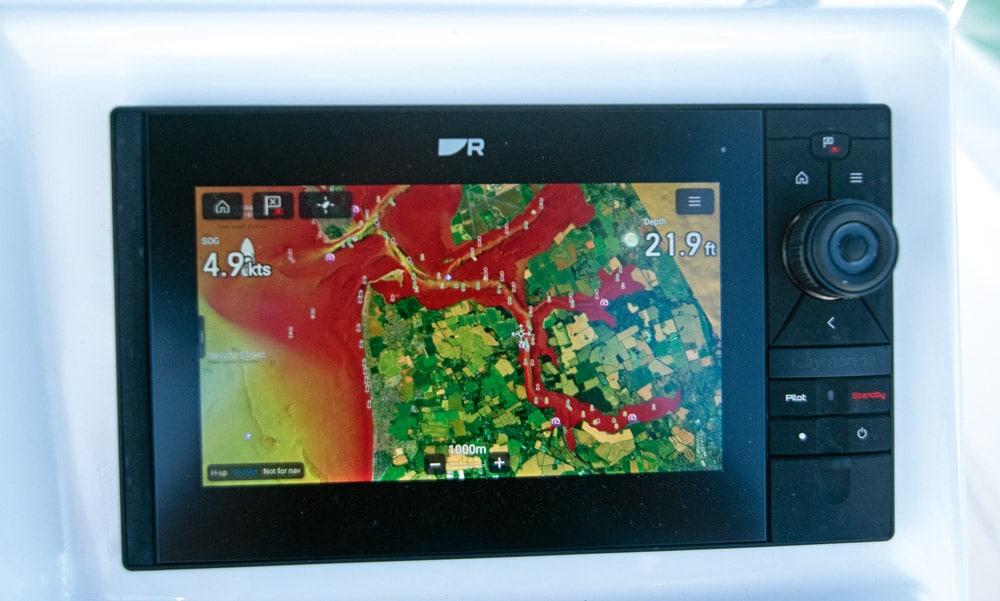
One of the cartography options with Raymarine Axiom.
The helm of the Hurricane 21 has been well thought out. The seating, though not sprung, is comfy, supportive and works well whether seated or standing with the bolsters folded back. The wheel and throttles are an easy stretch away, while the console itself is impressive for a 21ft boat. It provides total protection for both the helmsman and the navigator, and it packs in a comprehensive array of electronics, including two 9in Raymarine MFDs, so one can be designated for sonar and the other for navigation or radar. As well as the centrally located VHF, there is a Fusion hi-fi, a Scanstrut waterproof USB socket for phone charging with phone cavity beneath and a Zipwake control panel for the automatic Zipwake interceptor system. Not many 21-footers offer Zipwake, which is a shame as this fast-acting trim system is responsive enough to keep a boat this size on an even keel. It is also a very good idea in a craft that is likely to be loaded with fishermen running out to offshore fishing spots in challenging conditions.

There is no shortage of rod holders in the aft section of this fishing boat.
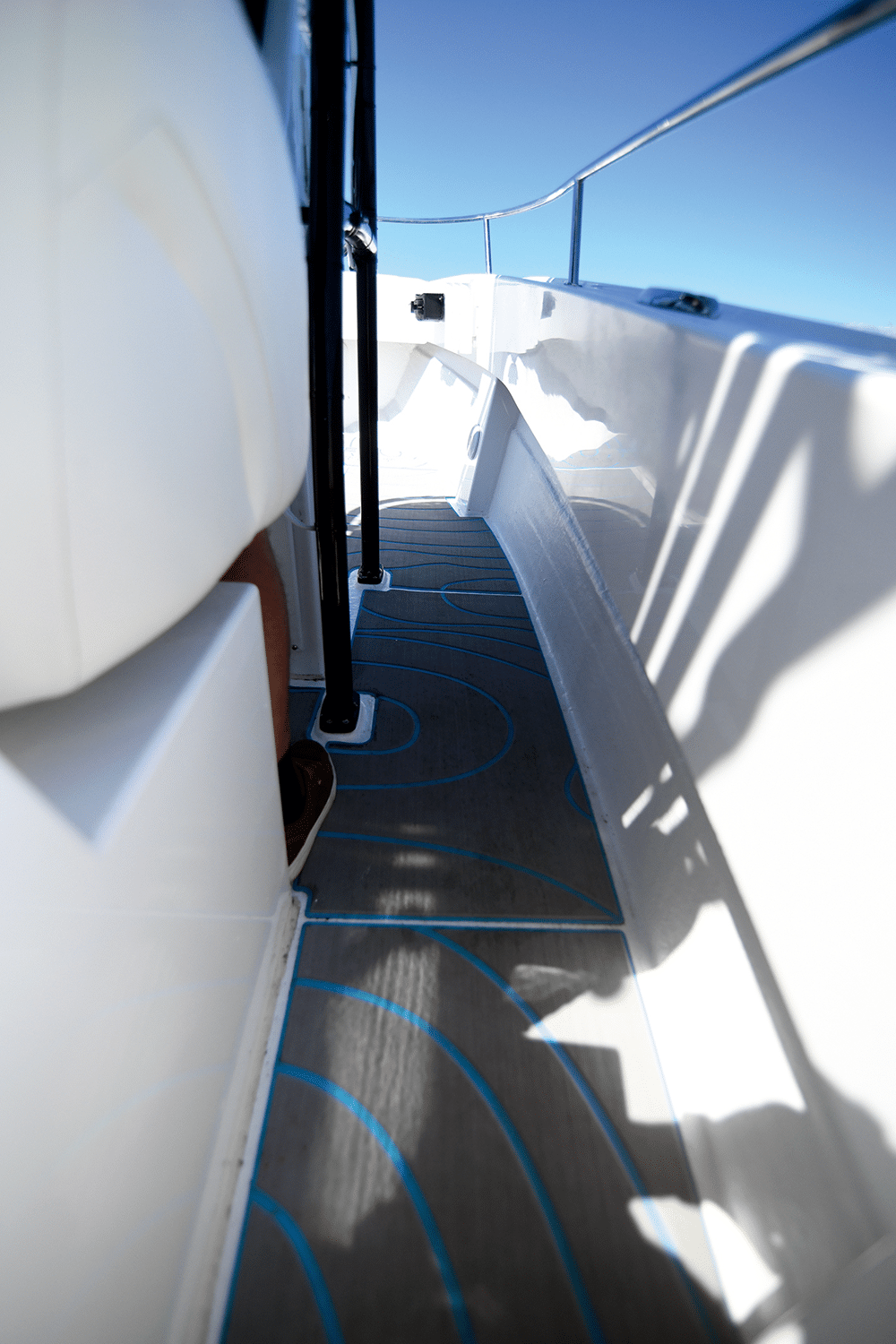
The side decks provide easy movement.

There is some storage in two stern-quarter lockers.

Soft synthetic decking throughout.

An under-deck locker lies in the forward section of the boat.

Adjustable rod holders in the bow.
Driving the Hurricane 21
Even overpropped as it was, the Hurricane is quick off the mark. The power-to-weight ratio is spot on, as indicated by the fact that we were planing at 15 knots with the engine running at a leisurely 2500rpm, returning an impressive 7.5 mpg. However, this boat is in its element running between 25 and 30 knots producing a healthy MPG. Suzuki’s Lean Burn system is known for enabling good mid-range fuel consumption, but the hull design and the absence of surplus fat in the boat’s overall design certainly help. This level of economy is unusual, especially in sea conditions that made physically recording the fuel figures hard work past 35 knots. Running through the choppy, confused waters in the eastern Solent was perfect for the Hurricane 21, as it cut its way through the sea state without complaint. Given the weather, it paid to keep the engine trimmed to less than 25% to soften the ride, though on a flat day, more trim out would likely give this boat a few more knots of top speed.
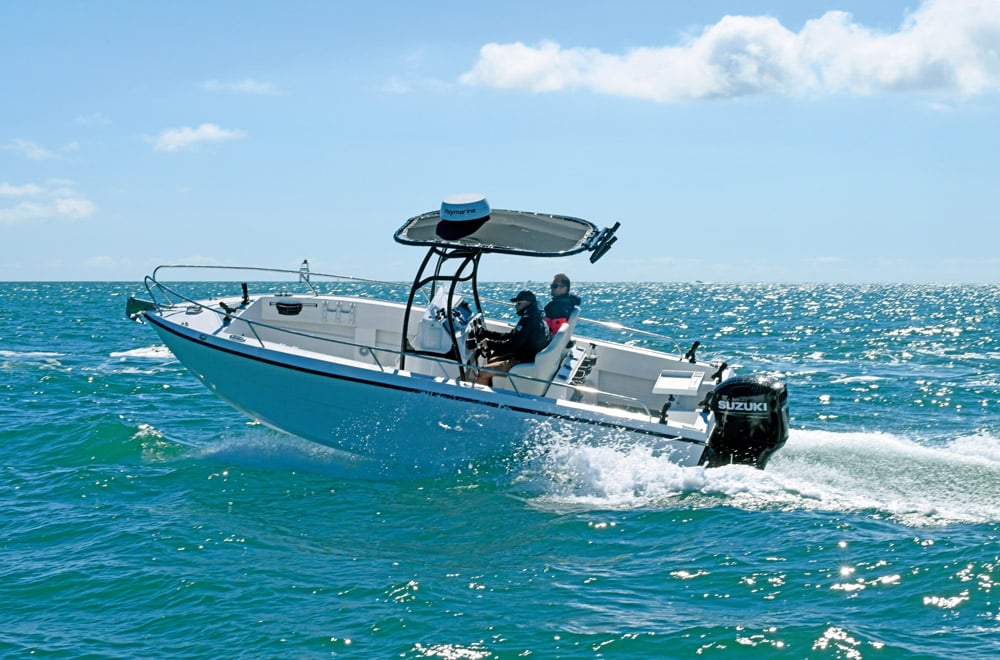
SF Marine told me this craft is built to commercial spec, hence its 70mm transom, and given how it took the conditions in its stride, I don’t doubt it. It turns very well, as the boat digs in and tacks round without a hint of hull slide or cavitation. The steering is certainly not over-responsive, and I would go so far as to say that it is a touch on the firm side, hence the wheel is fitted with a knob just in case you need a bit more turning power. On balance, I found the steering OK for the confused sea conditions, where you want stability over anything else. Running into the weather, you tend to forget you are in a 21ft boat unless you have the hull out of the water, and even then she lands with composure. The seating certainly helps, though to be fair, I did stand most of the time, as you can wedge yourself in securely and get a good view over the bow.
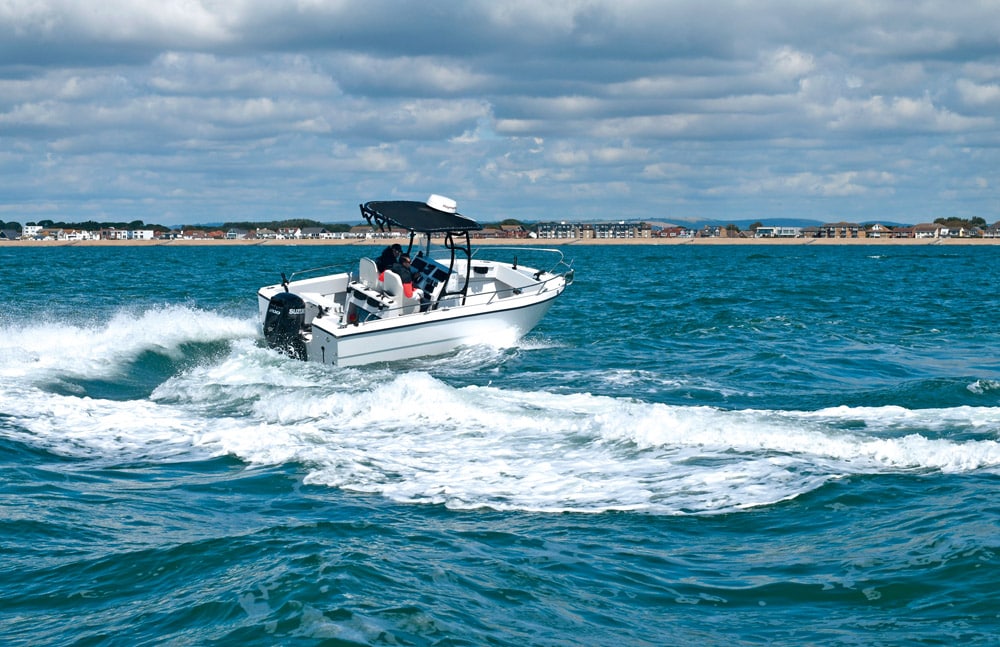
Verdict – Hurricane 21
This craft is built to be exactly what it is – a fast and solid offshore fishing boat with good seakeeping and predicable handling. It has a range of engine options from 115hp to 300hp, as its commercial-spec transom allows the fitment of the big 300hp V6. Unless you anticipate large crew numbers, the 200hp engine is an ideal choice, though a 300hp 50-knot Hurricane would be a great boat to drive. Lastly, its price is very hard to beat, as few UK yards offer this level of offshore boating for half the price of a family RIB.
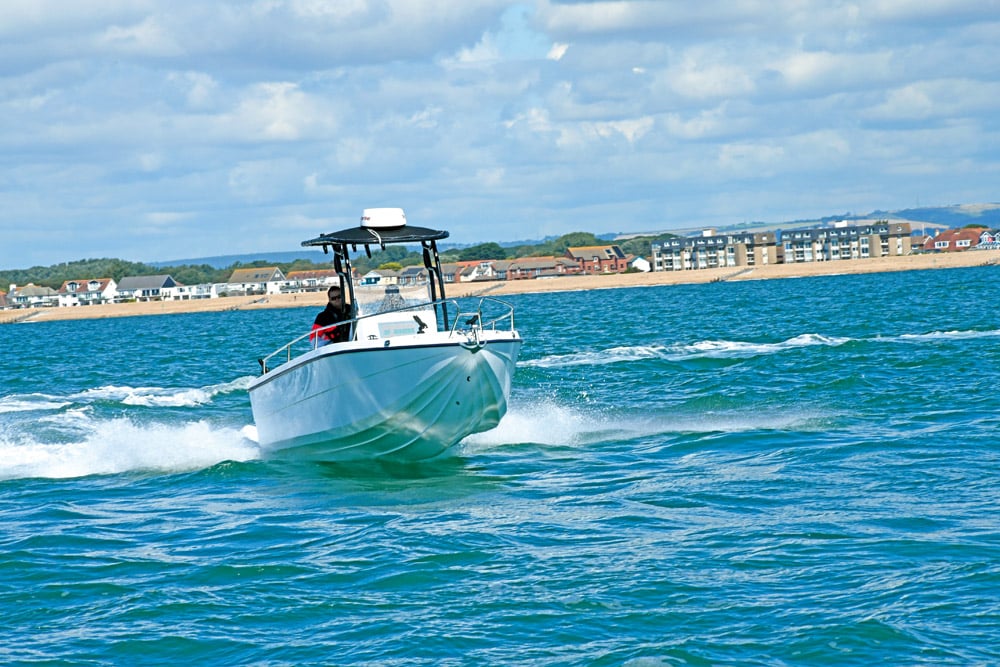
What we thought
For
- Very fuel efficient
- Soft-riding hull
- Solid construction
- Dry ride
- Great performance
- Good helm seating
Against
- Some may consider it spartan
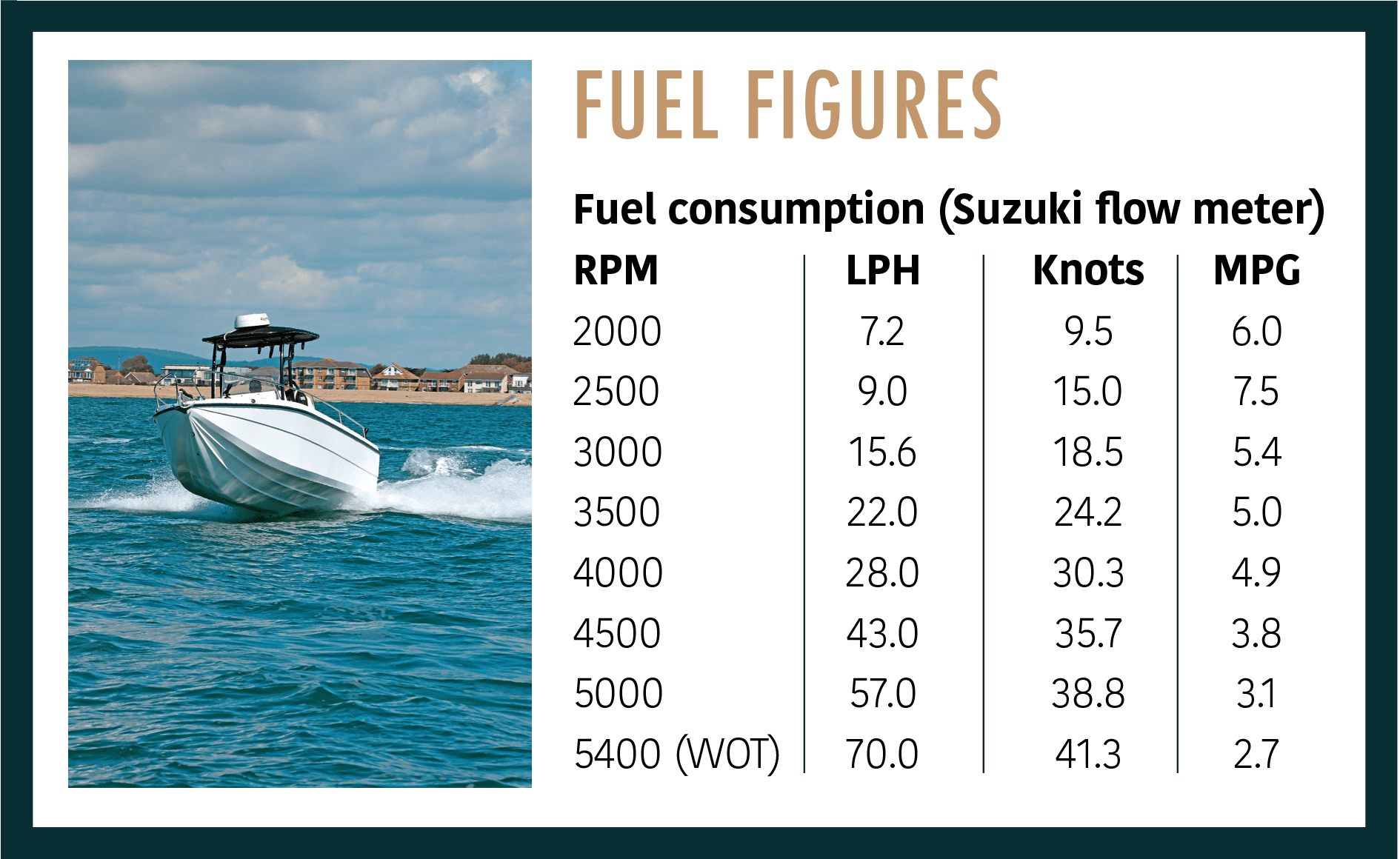
Specifications
- LOA: 21ft
- Beam: 7ft 8in
- Power options: Single 115hp to 300hp outboard – Suzuki
- Fuel capacity: 200L
- Draught: 1ft 8in
- RCD category: C for 6
- Test engine: 200hp Suzuki DF200
Performance
- 41.0 knots (2-way average) – slightly overpropped. Sea conditions: a confused F4 as a result of three days of 20- to 30-knot winds producing a fairly strong residual swell.
- 0–30 knots: 9 seconds
Price
- From: £20,000 (inc. VAT)
- As tested: £65,000 (inc. VAT) with Suzuki DF200 – commissioned
Contact
SF Marine will be launching a new model in the early part of 2024, read more.

